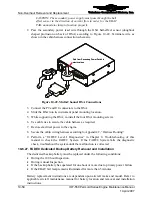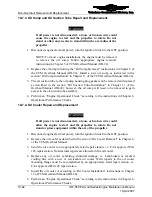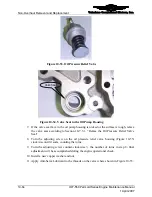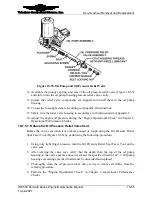
Teledyne Continental Motors, Inc.
TM
Non-Overhaul Removal and Replacement
IOF-550 Permold Series Engine Maintenance Manual
10-51
1 April 2007
6.
If the resistance is more than 0.5 ohms, clean the mating surfaces and re-measure the
resistance. Do not proceed until the resistance is less than 0.5 ohms.
7.
Connect the engine low voltage harness connectors (J3 or J4) to the pressure sensor;
orient the alignment keys of the connector with those of the sensor. Push the harness
connector on the sensor connector while twisting the lock ring clockwise. The
connector lock ring will “snap” into its final position allowing no further rotation.
When properly mated and locked, the bayonet orientation pins are observable in the
locking ring pin observation port as shown in Figure 10-45.
Lock
Pin
Observation
Port
Lock
Pin
Observation
Port
Figure 10-45.
Harness Connector and Sensor Orientation Keys
8.
For proper operation of the engine, route, clamp, support, and protect the wires in the
engine low voltage harness in a manner to prevent chafing, fretting, and wear of the
lead wires. Route and secure the harness IAW Appendix C, “Harness Routing.”
9.
Perform a “FADEC Level I Diagnostics” in Chapter 8, Troubleshooting of this
manual to check the FADEC System. If the FADEC System fails this diagnostic
check, troubleshoot the system until the malfunction is corrected.
10.
Perform an “Engine Operational Check” according to the instructions in Chapter 6,
Operational Performance Checks.
10-6.15. Fuel Pressure Sensor Removal
Procedure
1.
Disconnect electrical power to the engine.
2.
Place the aircraft fuel selector valve in the OFF position.
3.
Cut and remove cable ties as necessary to remove the connector from the sensor.
4.
Disconnect the engine low voltage harness circular connector from the fuel pressure
sensor.
5.
Place a protective cap on the engine low voltage harness connector.
6.
Unscrew the fuel pressure sensor from the fuel distribution block.
















































